On Friday, RP Data’s March home price report noted the following about Melbourne’s apartment market, which it suggested had hit the skids [my emphasis]:
The largest performance gap between houses and units is evident in Melbourne, where higher unit supply appears to be weighing on the rate of value growth. Melbourne house values were up 10.7 per cent over the past twelve months, whilst unit values are only 2.5 per cent higher over the past year.
According to Mr Lawless, “The CoreLogic December 2015 Pain and Gain report released last week showed 19.5% of all Melbourne council area units were resold at a gross loss, meaning, nearly one fifth of all apartments that resold over the last three months of 2015 did so at a price lower than what they were previously purchased for. Such a high proportion of loss making resales is a likely indicator of negative equity developing in this precinct as a result of supply outstripping demand.”
And over the weekend, The AFR reported that Melbourne’s apartment market had “hit a turning point” and off-the-plan apartment buyers in central Melbourne “can kiss goodbye to their hopes of capital growth for the assets that are already delivering anaemic rental incomes”:
Prices have already started falling…
The price corrections happening now are partly a consequence of stock bought off the plan – available to offshore investors and non-residents – entering the the smaller secondary market of locals…
And with lenders tightening credit to buyers of apartments – particularly investors and offshore purchasers – concern is growing about settlement risk, the situation in which buyers who have paid a 10 per cent deposit for an off-the-plan apartment are unable to stump up the extra equity their lender demands at time of settlement…
“Anyone who has bought an apartment off-plan and then looks to on-sell within a couple of years will probably be looking at a 10 per cent decline,” [Angie Zigomanis from BIS Shrapnel says]…
For mine, it is not just the Melbourne apartment market that is facing oversupply, but also Queensland, Perth and potentially Sydney as well. As shown in the next chart, high-rise apartment approvals – i.e. approvals for apartment structures four or more storeys high – have exploded across each market:
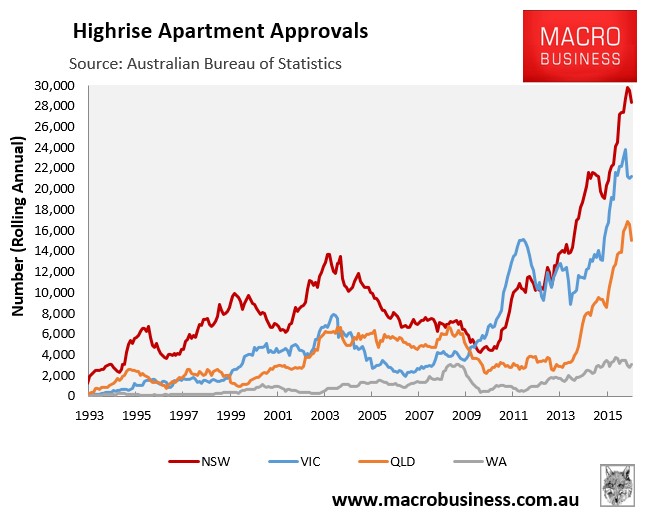
The difference, however, is that overall dwelling construction in Melbourne (both houses and apartments) has been running at a much higher level that Sydney over a long period of time, meaning that Sydney is probably far less exposed to a potential dwelling oversupply (see below charts).
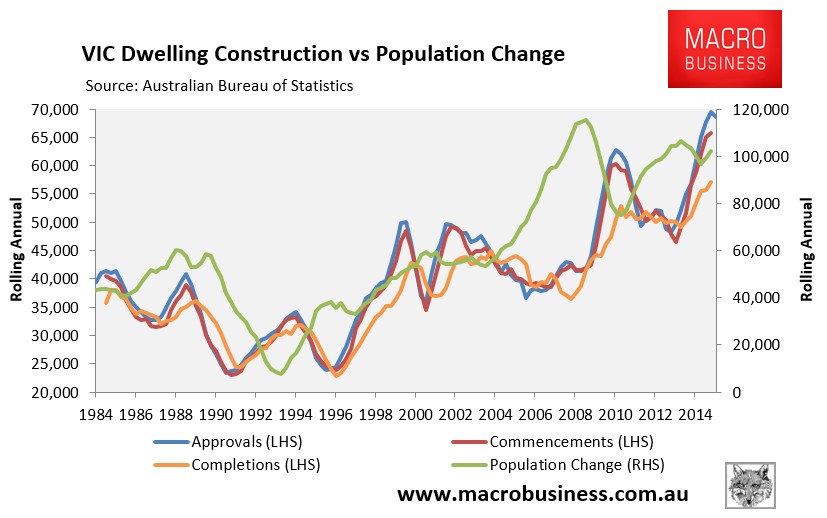
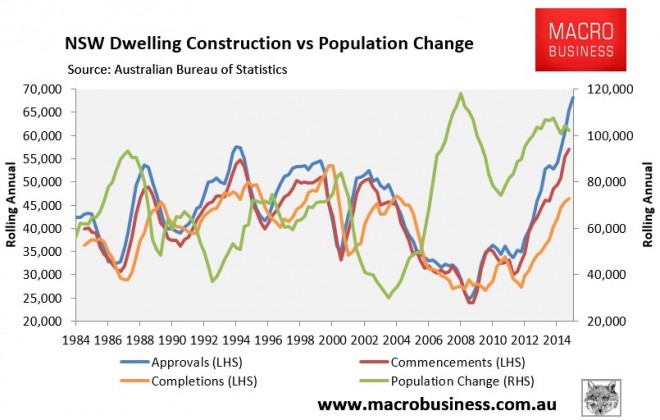
Further, unlike Melbourne, Brisbane’s and Perth’s population growth is slowing fast and this is occurring just as dwelling construction is accelerating:
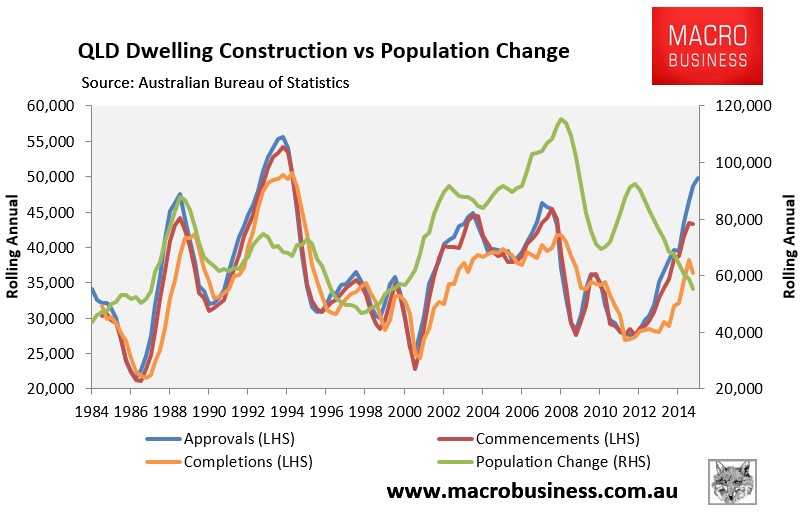
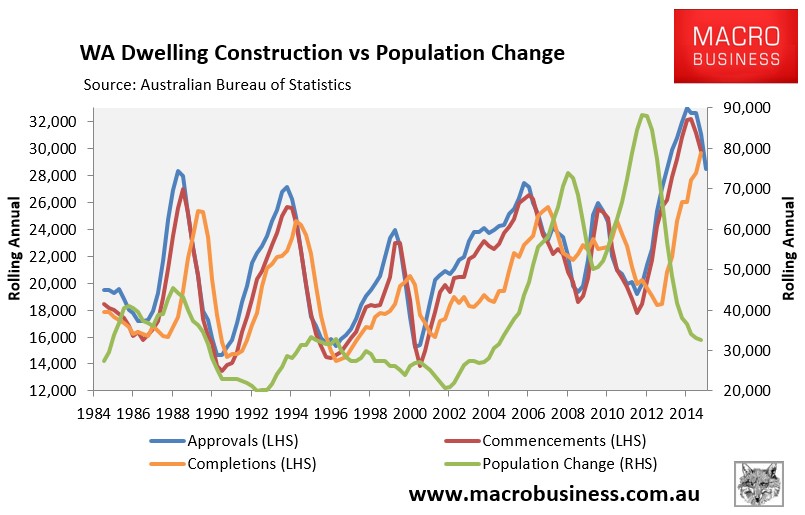
Therefore, I would be particularly nervous if I was an off-the-plan apartment investor in Brisbane and Perth, given the collapsing population growth and that apartment rents across both jurisdictions are already falling, down 0.4% (Brisbane) and 9.3% (Perth) in the year to February, according to RP Data.
While Melbourne’s high-rise apartment market is also looking precarious, at least the city is being supported by turbo-charged population growth. As long as this continues, the downward pressure on prices and rents should be moderated.
But if/when the population ponzi slows, then the apartment market in Melbourne will be hit hard.

